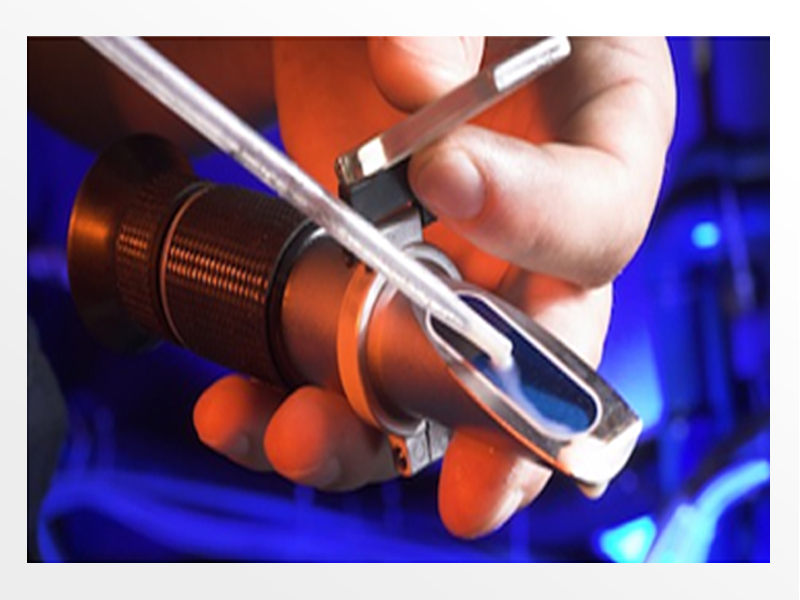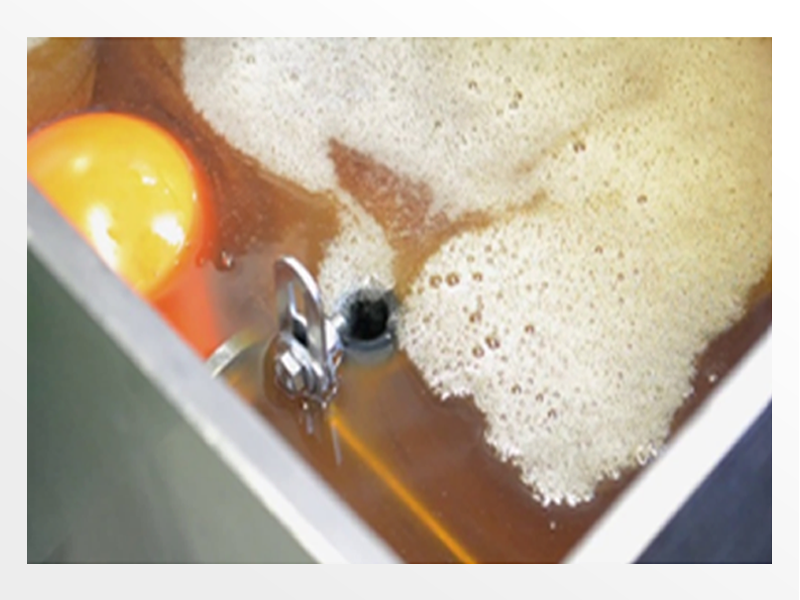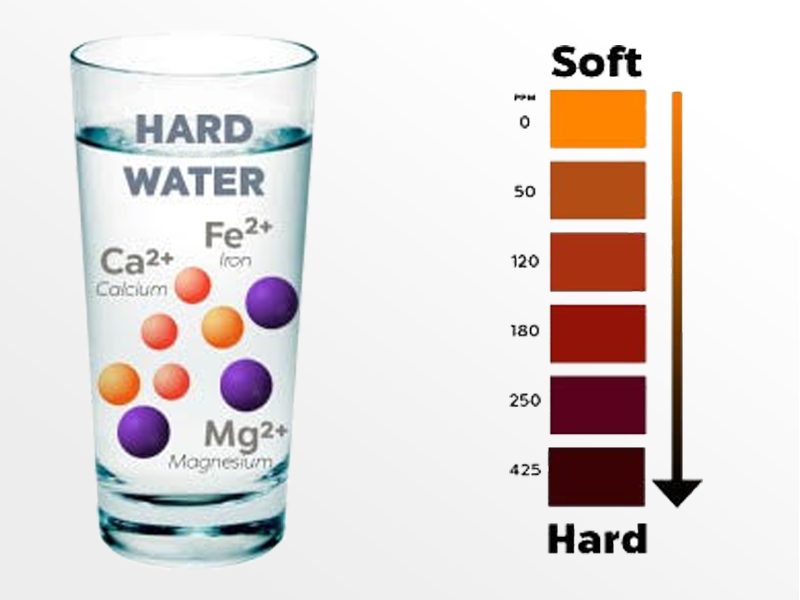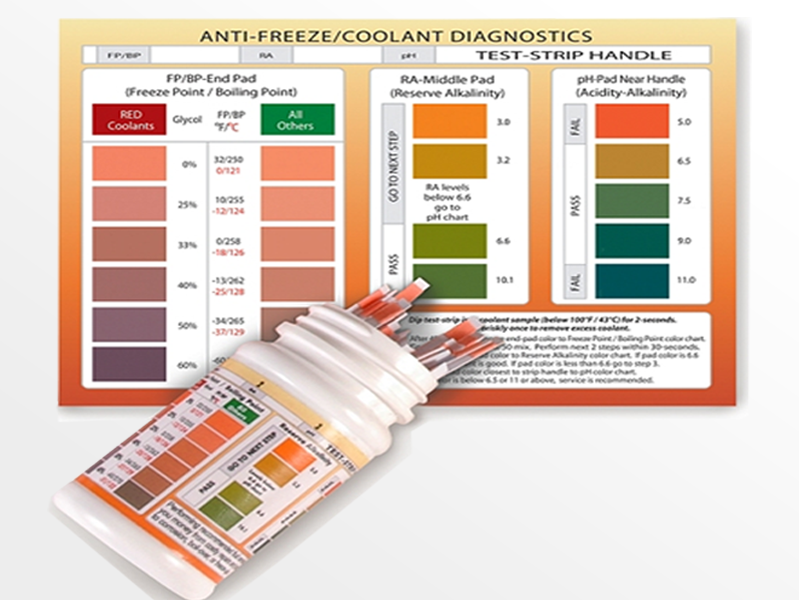EMULSICHEM LUBRICANTS PVT LTD. Has been manufacturing high quality specialty fluids for the metalworking industry since 1974. We are proud that we are ISO 9001 Certified. This testifies to our long-standing commitment to providing the best possible products, service and delivery. Our #1 goal is total customer satisfaction.
Our company history in metalworking fluids began with the introduction of COOL-TOOL CUTTING AND TAPPING FLUID which went on to become a renowned brand name. The success of this product led to the development of a complete line of water extendible cutting and grinding fluids, sawing Fluids, industrial cleaners, rust preventatives, drawing and stamping compounds, thread cutting oils and other associated products. Our metalworking fluids offer advanced technology and are formulated
Our products are designed to be friendly to the environment and the people who use them. Our BIOSTABLE cutting and grinding fluids are performing very successfully all over. They are guaranteed not to go rancid (with proper maintenance) and because of their long sump life, disposal costs are reduced. We continually research new and improved technology and raw materials for our fluids as well as advancements in the metal-cutting industry.
Metalworking fluids or coolants play a critical role in most machining processes. The main functions of a metalworking fluid are:
COOLING: To reduce and remove heat build-up in the cutting zone and in the workpiece.
LUBRICATE: and thereby reduce friction between the tool and the chips being re- moved.
CHIP REMOVAL: Flush chips away from cutting zone, carrying them back to the sump.
PROTECT AGAINST CORROSION: of machine workpiece and tools.
Every operation has its own specific requirements for cooling versus lubrication. By varying the mixing ratio or concentration of a water extendible coolant, you can alter the balance of cooling and lubrication.
In general, the more water (leaner mix), the better the cooling; the more concentrate(richer mix), the better the lubrication provided. When machining, the requirements for lubrication are generally greater than for cooling; hence a richer concentration is used. When grinding, the requirements for cooling are greater; hence a more lean concentration is used (but not so lean as to cause rust).
There are exceptions to every rule and this one is no different. Some high-speed machining can be performed well with rather lean mixes, and some grinding applications, such as form or creep-feed grinding require a rich mixture for high lubricity. Each operation should be evaluated on its own to determine proper concentration.
Neat oils are made up primarily of naphthenic or paraffinic base Oils with extreme pressure additives such as chlorine, sulphur and fats. Neat oils will not emulsify with water nor do they contain any water.
Greater than 30% mineral oil and no water in concentrate. Dilution appears milky and not translucent.
Less than 30% mineral oil content in concentrate and the concentrate contains water. Dilution appears translucent.
Zero mineral oil content. Dilution looks transparent and is a true solution with no droplet formation like semi-synthetics and soluble oils.
More economical than straight or neat oils; dilution with water lowers cost without sacrificing a great deal of tooling effectiveness.
Soluble oils cool 2 to 3 times better than straight oils.
Emulsions of soluble oils are very versatile and can be used in most machining and grinding applications on a wide variety of materials.
Soluble oils have better health and safety aspects with respect to the shop environment vs. straight oils; no fire hazard, reduced oil misting and fogging.
Of all the water extendible metal removal fluids soluble oils are the most forgiving of concentration fluctuations and poor management.
Residues created by soluble oils are generally oily and not sticky.
Higher disposal costs due to high percentage of oil versus synthetics or semi-synthetics.
Emulsions are milky, therefore the workpiece is not visible through fluid.
Less cooling in high-speed applications vs. synthetics or semi- synthetics.
May tend to pick up tramp oils due to partial mechanical emulsification from circulation through the coolant pump.
Leaves oily film on machine and parts for protection.
Tend to reject tramp oils.
Very stable emulsion, long lasting.
Better cooling allows higher cutting speeds.
Semi-synthetics offer the best of both technologies; soluble oils and synthetics.
Semi-synthetics emulsions offer micro size oil droplets that have advantages in single point turning applications where optimal cooling and less lubrication is required.
Our semi-synthetics are ideal for powdered metals, cast iron and metals that when cut don't create chips but rather sand-like swarf that can clog filters and form sump clinkers. Our semi-synthetics are great for cast iron machining and grinding applications.
Semi-synthetic coolants are great for cleanliness and workpiece visibility.
Low oil content reduces the physical corrosion film that is needed in some applications.
Mists, smoke or disposal may be a problem due to oil.
Semi-synthetics are not very forgiving when it comes to concentration Control and rust and corrosion could be the results of poor fluid management.
Rapid heat dissipation.
Excellent work piece visibility
Total rejection of tramp oils possible.
Usually easy to measure and control concentration.
Bacterial attack may be easier to control.
Usually stable and potentially long-lasting
No oil mist problem; no oil disposal concerns..
Easily filtered.
Recycling or reclaiming is usually highly effective.
Low consumption due to the fact that synthetics are true solutions with no droplet formation adding to carry off issues.
High performance products can be expensive.
Residual films may be tacky or sticky, which may cause gumming in the moving parts of the machine.
Compared to oils, they have significantly reduced corrosion protection.
Less forgiving in poor fluid management scenarios and require tighter control of concentration ratios to protect against rust and corrosion.
Good coolant maintenance programs will include regular laboratory tests of the coolant, either in-house or by the coolant manufacturer. This section contains suggestions for proper maintenance and controlof coolant that the customer can perform. Implementing these suggestions is not as straightforward as it seems. Particularly in small systems or individual sumps, control and maintenance of coolant can be challenging.
Frequent testing and adjustment of coolant is feasible on large central systems where the cost of these procedures is easily justified in the control of 10,000 litres of coolant. It is not as easy to justify detailed analysis of a 100 litres sump. Unfortunately small systems are subject to much more rapid changes and greater fluctuations and therefore actually should be checked more frequently than large tanks to maintain good control. These factors make the choice of coolant particularly critical for small sumps.
Small coolant systems normally use less effective equipment for filtration and oil separation than those found on central systems. This requires that the coolant in small systems be more tolerant of contamination from metal fines, tramp oils and other materials or contaminants.
Many factors are involved in the success or failure of a metalworking coolant. This document will attempt to address the most frequently encountered factors, and also offer tips and techniques for maximizing the performance of your fluid. These guidelines should be strictly adhered to for optimal results.
The most important step in maximizing coolant life is to start with a clean sump.
Any bacteria, fungus, dirt and/or sludge left from the previous coolant can decrease the life of the new fluid.
Thoroughly cleaning with a good machine cleaner is recommended before the introduction of any new coolant.
CLEAN Xdeveloped by us is a low-foam alkaline cleaner designed to remove process oils, gummy deposits of oil, grease, swarf and normal shop soils from machine tools, floors, and other hard surfaces. Clean X combines organic and mineral alkalinity builders, detergents, water conditioners and deodorizer for optimum sanitizing performance.
Clean X also contains special additives designed to penetrate deep into compacted chips and swarf, and render the machine neutral of bacteria and fungus. Clean X is mild enough on the operator’s skin that there is no concern for operator discomfort during the 24 hour cleaning cycle.
If the system is severely contaminated or rancid, an appropriate amount of conditioner approved for use in coolants should be added and allowed to circulate per manufacturer's instructions before initiating cleanout procedure.
Drain sump or system as far as possible.
Remove any solids from sump or system.
Add 1 litre of CLEAN X machine cleaner for each 20 litre of coolant capacity.
Fill the sump with tap water up to the normal operating level and allow the fluid to circulate for at least 4 hours.
While the fluid is circulating, use a rag or brush to remove stubborn de- posits on machine surfaces and troughs. Allow the fluid to wash the material into the machine sump.
Remove the fluid from the sump
Remove any further solids from the sump.
Fill the sump to normal operating level with water, add 1 litre of CLEAN X to each 100 litre of water and allow the fluid to circulate for at least 1/2 hour as a final rinse
Drain this solution from the machine sump.
When production absolutely cannot be interrupted for the period of time required for the previous cleaning procedure (A), the following method may be substituted with good results:
Add CLEAN X directly to old coolant at 1-3% of volume of sump.
Run production 1-2 shifts to allow the built up residues to release from the most
Difficult to reach areas of the machine.
Drain system. Remove all solids. If you are using a sump sucker be sure to Suction from the top of the fluid first, this will pull all of the free tramp oils off first.
Rinse sump and flush coolant lines. Remove rinse water. Another option to Rinsing the machine with pure water is to make a weakdilution 1.5% Concentration of the newly selected coolant as your rinse solution.
Recharge the machine with fresh coolant at the suggested and Recommended concentration ratio %.
Remove the fluid from the sump
Clean X is a low foam alkaline cleaner designed to remove process oils, gummy deposits of oil, grease, swarf and normal shop soils from machine tools, floors, and other hard surfaces. It combines organic and mineral alkalinity builders, detergents, water conditioners and deodorizer for optimum performance.
The primary application of Clean X is for cleaning machine tool coolant sumps and surfaces. Clean X can also be used for general shop cleaning with mop and bucket,auto-scrubber or spray washer.
Powerful Detergency
Non-Ozone Depleting
Versatile
Economical
Mild Odour
Oil Rejecting
Drain sump or system as completely as possible.
Remove any solids from sump or system.
Add 1 litre of Clean X for each 20 Litres of coolant capacity.
Fill sump with water to normal operating level and allow to circulate for a period of at least 4 hours.
While cleaner is circulating, use a rag or brush to remove stubborn deposits on machine surfaces and in coolant troughs. Allow fluid to wash material into the sump.
Remove cleaner and all solids from the sump.
Fill sump to normal operating level with water and add 1 gallon of Clean X for each 100 litres of water and allow to circulate for at least 1/2 hour. Remove fluid from the sump.
When mixing coolant, it is best to use an automatic proportioner which accurately and thoroughly mixes coolant.
Always top up the coolant with a mixture of coolant and water, not just coolant or water.
Never add coolant concentrate directly to the sump.
Add the mix to the sump to the proper level.
Start the pump and allow the fluid to circulate for at least 1/2 hour.
Check concentration with refractometer and make necessary corrections before machining.
Remove the fluid from the sump
Due to the detergency of fresh emulsions they will continue to clean a sump and system after the initial charge. This may result in:
oA temporary flush of odours from loosened deposits
A temporary spike in bacteria levels
Don’t be alarmed if the appearance of floating masses of sludge which have been dislodged from the inaccessible areas of the sump and or System.
These are considered normal and will usually occur within the first two weeks of use of a fresh charge. Once removed these floating masses should not reappear.
Once a new coolant is in, concentration control is the most important parameter for a coolant user to monitor. It is imperative for long coolant and tool life.
As a rule of thumb: Concentration consistency can be achieved by never adding straight water or adding straight concentrate to the machine sump; always add a weak dilution half of the goal concentration. If the goal concentration is 7% always add 3.5% concentration. The reason for this is that the water evaporation rate versus additive and component depletions correspond to this formula.
Low concentration is the most common cause of coolant problems that customers experience. Our coolants have been designed to operate at a minimum concentration of 5% (20:1). A lower concentration than this, even for a short period, could lead to problems such as machine and workpiece corrosion, poor tool life and rancidity of the in-service coolant.
are designed for measuring the concentration of an aqueous solution, can be used for checking cutting and grinding fluid concentrations. Hand refractometer are useful for day-to-day control of concentration and are much faster than the laboratory procedure.
To use a refractometer, you simply place one or two drops of the coolant
Solution onto the prism surface, close the cover plate, look through the eyepiece (facing the light) and read the scale. Compare this reading with the Brix chart for your coolant to get actual concentration. It is important to ensure that your refractometer reads zero on water alone.
This is accomplished by placing a drop of water on the prism and reading the results normally. If the reading is not zero, an adjustment screw must be turned to calibrate the unit.

TRAMP OILS
An important factor in coolant life is control of tramp oils. This term refers to any oils which are not part of the original coolant formulation, including way lubes, hydraulic oil, tapping fluids, gear lubes, etc. which find their way into the coolant.
These tramp oils carry their own contaminants, such as sulphur, phosphorous or solvents, which can be detrimental to the coolant, either by destabilizing the emulsion or by providing food for bacteria. If tramp oil is allowed to cover and "seal off" the surface of the sump, bacteria will grow and multiply rapidly, producing the "rotten egg" odour familiar to many machinists. Keeping the level of floating oils to a minimum will prevent this.
Another problem with tramp oils is the potential for dermatitis caused by skin contact with these oils, which may contain irritating components. Our metalworking fluids are designed to reject rather than emulsify these oils, causing them to float to the surface, making removal a simple job. They can be skimmed from the surface of the sump by any of a variety of methods, such as oil wheels, rope type skimmers, absorbent pads or even shop vacuums.

An area for concern that is so often overlooked is the level of chips, fines or swarf in the sump. Quantities of these small particles can provide an enormous surface area for bacteria to attach themselves to while at the same time creating "dead areas" where coolant cannot circulate. There are many methods available for removal of these particulates such as magnetic wheels, conveyors or index able filters. In general, the less solid material in the sump or system, the better.
Due to the nature of manufacturing facilities today, it is rare that only one type of material would be machined. Because of the numerous types of metal chips that conglomerate at the bottom of the sump, there is a potential to create galvanic reactions, which could harm the coolant emulsion and result in shortening the coolant life span.Corrosion is also
Due to ordinary evaporation, a metalworking sump acts like a still and any minerals in the water will remain behind as the water evaporates. Over time the mineral build-up can result in poor emulsion (mix) stability, heavy residue on machine surfaces, corrosion problems and a host of undesirable conditions.
Emulsichem Lubricants can perform analysis of the customer’s water for hardness and conductivity to determine compatibility with Emulsichem products. A good rule of thumb is to use tap water for the initial charge and the purest water available for makeup solutions, thus minimizing the level of mineral build up. (A certain amount of water hardness can actually help suppress foam levels.)

Run oil skimmers to remove excess tramp oil from coolant. These are generally more efficient if run during down time, when the coolant is still and the oils can float to the surface. A wet/dry vacuum can also be used to remove floating oils. Dispose of as waste oil.
Circulate coolant and check concentration with a refract meter. Maintain fluid level. Add rich or lean pre-mixture of coolant and water where needed.
Check ph. (If pH starts to fall, add coolant to bring up concentration. If pH does not stabilize, it is time to replace coolant. If coolant needs to be replaced, dump old coolant, clean machine and charge with fresh coolant.)
Record data on a machine check sheet (See example). This can be used to follow trends of a particular machine.
Check all filters, chip strainers and canister filters.
Provide aeration of coolant during extended periods of idle time. An air lance with 5 psi pressure allowed to bubble gently in an idle sump is of- ten sufficient to prevent excessive anaerobic bacteria formation.
Coolant pH (acidity/alkalinity) can give a good indication of overall sys- tem condition. All water extendible coolants are designed to operate in the alkaline range, between 8.0 and 9.5 ph. Alkalinity helps control rusting and minimizes microbial growth. A regular pH check using tape, strips or pens can spot trends before they become problems. A severe drop in pH can indicate seriously degraded coolant.

Coolant foaming excessively.
The first thing to check is coolant concentration. A mix that is too rich can contribute to foaming, just as a strong soap solution will foam more than a weak one. Check concentration with a refractometer and ad- just as necessary.
Another factor that can influence the level of foam is water quality. Coolant mixed with city water or well water will break foam much faster than if mixed with deionized or otherwise demineralized water.
A third factor to take into account is the possibility of mechanical problems. If there is a leak on the intake side or around the shaft seals of a coolant pump, air can be drawn in and become entrained in the fluid, resulting in a very slow-breaking layer of dense foam. This same condition can occur if the sump is run low and air is drawn into the intake.
A fourth possibility is contamination with foam-generating materials such as cleaners which may have been inadvertently added to the sump.
Another important contributor to foam generation is the velocity and pressure at which the coolant is delivered to the cutting zone.High-pressure, high-velocity delivery generates much more foaming activity in a coolant than low-pressure, low-volume delivery.
Rusting of parts
Coolant mix too lean. Check concentration with refractometer and adjust if necessary.
pH too low for effective corrosion control, either through contamination or bacterial degradation. Check pH with paper or meter.
Short sump life
Concentration not maintained at high enough level. Check concentration with refractometer and adjust concentration if necessary to product parameters.
Tramp oil sealing surface of sump, excluding oxygen and allowing rapid growth of anaerobic bacteria. Take steps to reduce or remove floating tramp oil.
Excessive contamination of sump by dirt, fines or other extraneous materials, such as trash, coffee or cigarettes. Provide filtration for coolant and receptacles for garbage.
Heavy or sticky residues
Coolant concentration too rich. Check concentration with refractometer and adjust with water if necessary
Water too hard. High levels of minerals can build up over time due to evaporation, resulting in hard, crystalline residues. Use treated water, such as that obtained with D.I. (deionizer) or R.O. (reverse osmosis) units.
Excessive tramp oil contamination. Tramp oils can build up and coat machine surfaces. Take steps to reduce or remove floating tramp oil.
Heavy or sticky residues
Since many factors can contribute to dermatitis in the metal- working industry, determining a specific cause can sometimes be very difficult. Some of the main factors are:
The strength of the cutting fluid solution and the consequent defatting of the skin that results from too-frequent contact with strong solutions.
The type of metal being machined may result in the presence of sensitizing elements such as nickel or chromium dissolved in the solution. These can result in an allergic reaction.
Any grinding or metalworking process will result in small, sharp particles of metal or abrasive materials being circulated where they can come into contact with and damage unprotected skin. Damaged skin then becomes a route of entry for contaminants and irritants, whether at work or at home.
Other causes of dermatitis can be such things as hydraulic fluids or way lubes which may find their way into a sump. These products are often designed without human contact in mind, and may contain components which can initiate or worsen a dermatitis condition.
Washing hands with pumice or grit containing soaps can actually contribute to dermatitis, by creating small cuts on the skin and delaying or preventing healing in the presence of metalworking fluids.